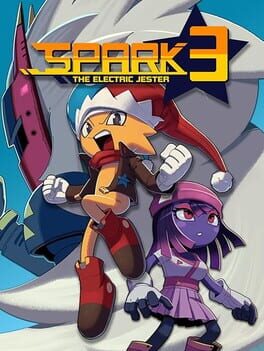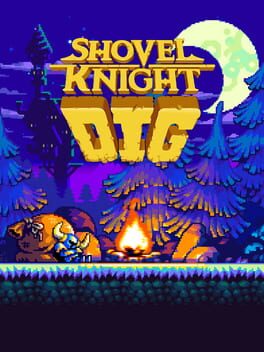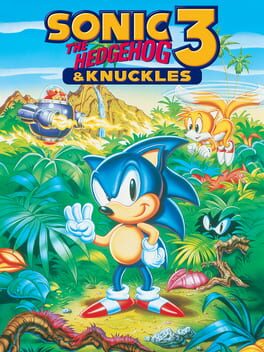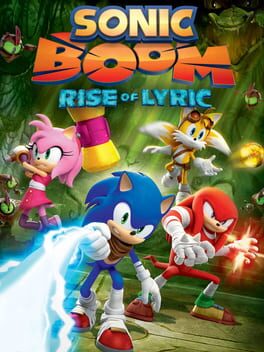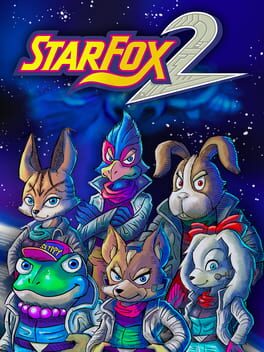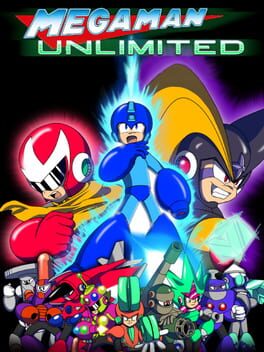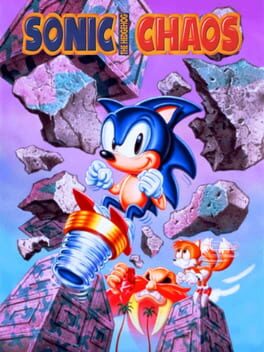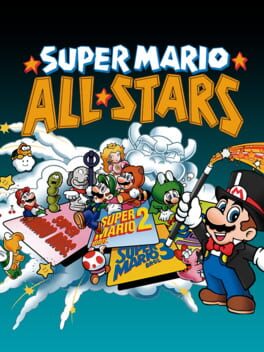Gnarly_Dud
For what is pretty much made by one guy, this is a pretty impressive game, let alone a 3D platformer. Spark 2 was already a decent game, but Spark 3 not only succeeds it but arguably is one of the greatest fast-paced 3D platformers ever made.
It keeps everything that made Spark 2 great while cleaning up its rough edges; the enemy placements are paced much better, you have even more movement options to blaze through levels, and there's more variety in gameplay types while still being fun.
As good as Spark 3 is, there are still some flaws. The combat has improved, but it can still boil down to mixing light and heavy combos to keep a damage meter up. It feels like it could still be more interesting.
Fall damage is a cool idea conceptually when considering one of the vertical levels in Spark 2, but breaking your fall by jumping or dashing is a bit of a pace-breaker. For the levels not designed around it, falling can become a bit of an annoyance.
The score timer from Spark 2 is removed, so you can explore the levels without the risk of forfeiting your score, but it does create the issue of being able to meander in stages for 30 minutes and still secure the best score ranking. It feels like a good middle ground has yet to be struck between the 2 games. Maybe making the levels smaller and more tightly packed while having a time bonus could help.
It's still nuts that pretty much one guy made this. LakeFeperd should definitely be proud of how it turned out. Definitely worth playing.
It keeps everything that made Spark 2 great while cleaning up its rough edges; the enemy placements are paced much better, you have even more movement options to blaze through levels, and there's more variety in gameplay types while still being fun.
As good as Spark 3 is, there are still some flaws. The combat has improved, but it can still boil down to mixing light and heavy combos to keep a damage meter up. It feels like it could still be more interesting.
Fall damage is a cool idea conceptually when considering one of the vertical levels in Spark 2, but breaking your fall by jumping or dashing is a bit of a pace-breaker. For the levels not designed around it, falling can become a bit of an annoyance.
The score timer from Spark 2 is removed, so you can explore the levels without the risk of forfeiting your score, but it does create the issue of being able to meander in stages for 30 minutes and still secure the best score ranking. It feels like a good middle ground has yet to be struck between the 2 games. Maybe making the levels smaller and more tightly packed while having a time bonus could help.
It's still nuts that pretty much one guy made this. LakeFeperd should definitely be proud of how it turned out. Definitely worth playing.
Speedrunning was always one of my favorite ways to return to my favorite platformers. Replaying levels to build a perfect route and then executing through it always had a zen-like flow. Spark the Electric Jester 2 is one of those games that perfectly embodies that feeling.
The movement really is the highlight here. You have the speed and momentum of Sonic Adventure with the movement options of Mario 64. Because you're so agile, speeding through platforms and finding hidden routes feels intuitive.
What doesn't mesh as well with the platforming is the combat and exploration. The game is designed in a way where you either blitz it to the end or fight to earn a score while exploring at a slower pace, If you take too long, all your points are forfeited. Although making a route to execute a score run can still be fun, it feels at odds with your progression.
Fighting regular enemies and bosses generally locks you into a one-on-one fight that usually boils down to mashing your attack buttons and timing parries, making most encounters feel repetitive.
Maybe I thought the combat heavily detracted from the rest of the game, but when the credits rolled around I felt like I had to play through it again, twice. Even if there was no sequel, I'd be fine with Spark 2 being its own thing with the flaws it has. It's not faultless, but it could absolutely be worth your time.
The movement really is the highlight here. You have the speed and momentum of Sonic Adventure with the movement options of Mario 64. Because you're so agile, speeding through platforms and finding hidden routes feels intuitive.
What doesn't mesh as well with the platforming is the combat and exploration. The game is designed in a way where you either blitz it to the end or fight to earn a score while exploring at a slower pace, If you take too long, all your points are forfeited. Although making a route to execute a score run can still be fun, it feels at odds with your progression.
Fighting regular enemies and bosses generally locks you into a one-on-one fight that usually boils down to mashing your attack buttons and timing parries, making most encounters feel repetitive.
Maybe I thought the combat heavily detracted from the rest of the game, but when the credits rolled around I felt like I had to play through it again, twice. Even if there was no sequel, I'd be fine with Spark 2 being its own thing with the flaws it has. It's not faultless, but it could absolutely be worth your time.
2022
As a new rogue-lite approach to Shovel Knight, Dig introduces a lot of cool changes accompanied by some subtle tweaks, which I think ends up making a pretty awesome spin-off.
The emphasis on vertical scrolling and a more intricate digging mechanic, lead to consistently great platforming and hidden secrets, even when parts of the level design are randomized. The core gameplay with Shovel Knight feels just as good as before, possibly even better at times.
Dig is a lot more difficult compared to the original game, definitely to facilitate aspects of replayability and upgrading, but it's still important to mention how much more densely packed the enemies are and how much faster the game's pace is. Throughout runs, the temporary buffs you receive are not created equally, but they can generally give you an edge in a run.
The gripes I have with Dig come down to the short length, as well as the balance of some bosses and randomization. This game is ultimately not very long, though it can be replayable due to its difficulty and eventual planned DLC. What items you get, mid-game stages, and level layouts are, of course, random like in a roguelike. Some aspects of balance between upgrades and choices felt off to me personally. My experience starting at the last area via warp and beating the final boss, felt much easier compared to my previous attempt getting up there with similar upgrades.
Even though an actual successful run through this game from start to finish can be only about 30 IGT minutes, I believe Yacht Club and Nitrome did an excellent job making this game really challenging to master and just as enduring to replay.
The emphasis on vertical scrolling and a more intricate digging mechanic, lead to consistently great platforming and hidden secrets, even when parts of the level design are randomized. The core gameplay with Shovel Knight feels just as good as before, possibly even better at times.
Dig is a lot more difficult compared to the original game, definitely to facilitate aspects of replayability and upgrading, but it's still important to mention how much more densely packed the enemies are and how much faster the game's pace is. Throughout runs, the temporary buffs you receive are not created equally, but they can generally give you an edge in a run.
The gripes I have with Dig come down to the short length, as well as the balance of some bosses and randomization. This game is ultimately not very long, though it can be replayable due to its difficulty and eventual planned DLC. What items you get, mid-game stages, and level layouts are, of course, random like in a roguelike. Some aspects of balance between upgrades and choices felt off to me personally. My experience starting at the last area via warp and beating the final boss, felt much easier compared to my previous attempt getting up there with similar upgrades.
Even though an actual successful run through this game from start to finish can be only about 30 IGT minutes, I believe Yacht Club and Nitrome did an excellent job making this game really challenging to master and just as enduring to replay.
I remember playing the original Game Gear version last year. After 8-Bit Sonic 2 and Sonic Chaos, it was a decent improvement, but anything on the Game Gear never compared to Sonic's best games.
This remake really unlocks the potential of the original, with some great surprises added. The level design is sprawling with alternate paths and secrets, taking inspiration from Sonic 3 and Mania. It's really polished for an unofficial game.
Props to Noah N Copeland and the team behind this, absolutely worth trying.
This remake really unlocks the potential of the original, with some great surprises added. The level design is sprawling with alternate paths and secrets, taking inspiration from Sonic 3 and Mania. It's really polished for an unofficial game.
Props to Noah N Copeland and the team behind this, absolutely worth trying.
2017
2013
